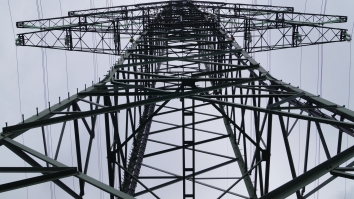
A revolution in current transformer testing
By Markus J�gerDifferent test devices and methods are used in the market to verify the performance of current transformers during development, production, installation and maintenance. This article describes a new and innovative solution to test current transformers at all lifecycle stages by using a revolutionary testing method called "the modeling concept".
Current transformers are used in electrical power systems for relaying and metering purposes. Depending on the application they are used for, the current transformers are designed differently.
Applications Areas
The current transformers for metering and protection applications both basically work the same way - translating high power primary signals to secondary readable values. However, while current transformers used for protection applications operate to well above the nominal current, the current transformers for metering purposes must go into saturation directly above the nominal current level to protect the connected metering equipment.
Protection current transformers
Current transformers play an important role in the protection of electrical power systems. They provide the protection relay with a ratio of the primary current so that it can operate according to its settings.
The transformation of the current values from primary to secondary must be accurate during normal and especially during fault conditions on the primary side (when currents up to 30-times the nominal current are not an exception).
Metering current transformers
Today, energy is supplied by many different sources including alternative energy sources like solar and wind power. To guarantee accurate billing in this competitive electricity market, additional metering points are necessary. It is therefore important to have the entire metering chain calibrated, as the meter is only as accurate as the instrument transformers sourcing it. This makes the testing and calibration of current transformers up to the 0.1 accuracy class essential. However, on-site testing of CTs of the 0.1 accuracy class is particularly critical as disturbances from power lines can influence the measurement results.
Testing of current transformers
Conventional testing methods apply a signal on one side and read the output signal on the other side
Several ways of conventional testing are possible:
1. The "traditional" way of testing a current transformer is to apply a high current to the primary side and read the signals on the secondary side. By using different burdens or injecting over-currents, various situations can be simulated and the signals on the secondary side can be measured and analyzed.
However, this method is time-consuming and material-intensive. Sometimes it is not even feasible as very high currents are required, e.g. for on-site testing of current transformers designed for transient behavior (TP types) as they have very high knee-points values .
2. Another common testing scenario for current transformers is injecting a defined testing voltage on the secondary side and reading signals on the primary side. Unfortunately using this scenario some parameters, like accuracy and knee point (excitation curve), can only be tested with limitations. This is due to the scenario's restrictions in accuracy caused by the very low signals in use and the maximum voltage of approximately 2 kV which can be applied to the secondary side of current transformers. Other important parameters like the transient dimensioning factor, the accuracy limit factor, the safety factor, composite errors, time constancies and many others cannot be tested at all.
As both methods have limitations, Omicron has developed a new way of testing CTs.
New modeling concept
Omicron developed the CT Analyzer test device which uses a revolutionary testing concept. The new concept of modeling a current transformer allows for a detailed view of the transformer's design and its physical behavior. The test device builds up a model of the current transformer by using initial data, measured during the test. Based on this model the test device is able to calculate parameters like the accuracy limiting factor (ALF) and the safety factor (FS) and simulate the CT's behavior for example under different burdens or with various primary currents.
Although having been available for only a few years the OMICRON CT Analyzer has rapidly gained wide acceptance with well over a thousand units operating in every corner of the globe including with many utilities and service providers in Australia.
The newly developed CT Analyzer is small, lightweight and conducts fully automated tests of current transformers within the shortest times possible.
It measures the transformer's copper and iron losses according to its equivalent circuit diagram. While copper losses are described as the winding resistance RCT, iron losses are described as the eddy losses or eddy resistance Reddy, and hysteresis losses as hysteresis resistance RH. With this detailed information about the core's total losses, the CT Analyzer is capable of modeling the current transformer and calculating the current ratio error as well as the phase displacement for any primary current and secondary burden.
Therefore, all operating points described in the relevant standards for current transformers can be determined. The model also allows important parameters such as the residual magnetism, the saturated and unsaturated inductance, the symmetrical short-current factor (over-current factor) and even the transient dimensioning factor (according to the IEC 60044-6 standard for transient fault current calculations) to be assessed.
Using the modeling concept for testing CTs, the CT Analyzer can offer an outstanding accuracy of 0.05 % in ratio and 1 min in phase angle deviation. This makes the CT Analyzer the most suitable mobile test device for testing metering CTs up to accuracy class 0.1.
The accuracy of the CT Analyzer is verified by several metrological institutes like the PTB in Germany, KEMA in the Netherlands and the Wuhan HV Research Institute in China.

Figure 1: Equivalent circuit diagram of a real current transformer
New Innovations - CT SB2
For its latest release in September the CT Analyzer was improved by new hardware accessories and software functions.
For automated testing of multi-ratio CTs with up to six tap connections (X1 to X6), the CT SB2 Switch-Box
is now available as an accessory to the CT Analyzer. The CT SB2 is connected to all taps of a multi-ratio CT as well as to the CT Analyzer.

Figure 2: connection example for a 6-tap current transformer
Thus every ratio combination can be tested automatically with the CT Analyzer without the need for rewiring. An integrated connection check function tests the secondary connection to the CT and indicates wiring mistakes before the measurement cycle begins.
Additionally, the CT Analyzer checks the different ratios of the current transformer tested. The testing signal will then be adjusted to make testing voltages above 200 V impossible. This ensures a high level of worker safety during operation.

Figure 3: CT Analyzer with CT SB2 attached
New Innovations – RemAlyzer
As a new measurement function for the CT Analyzer, the RemAlyzer allows current transformers to be tested for residual magnetism.
Residual magnetism may occur if a current transformer is driven into saturation. This can happen as a consequence of high fault currents containing transient components, or direct currents applied to the current transformer during winding resistance tests or during a polarity check (wiring check). Depending on the level of remaining flux density, residual magnetism dramatically influences the functionality of a current transformer.

Figure 4: Hysteresis curve at the max. saturation point showing the possible area for residual magnetism
Since remanence effects in protective current transformers are not predictable and barely recognizable during normal operation, these effects are even more critical. Unwanted operation of the differential protection may be caused. Protective relays also may shows a failure to operate in case of real over-current as the current transformer's signal is distorted due to the residual magnetism in the CT core.
Once the current transformer is magnetized a demagnetization process is necessary in order to remove residual magnetism. This can be achieved e.g. by applying an AC current with similar strength as the current which caused the remanence. In a second step, the current transformer is demagnetized by reducing the voltage gradually to zero.

Figure 5 and Figure 6: Demagnetization principle of iron cores
The CT Analyzer performs the residual magnetism measurements prior to the usual CT testing cycle as it automatically removes residual magnetism after testing. In order to determine the residual magnetism the CT Analyzer drives the core into positive and negative saturation alternately until a stable symmetric hysteresis loop is reached. The CT Analyzer then calculates the initial remanence condition to determine whether the core was affected by residual magnetism. The results are displayed as absolute values in voltage per second as well as in percent relative to the saturation flux (Ψs: defined in the IEC 60044-1) on the residual magnetism test card. Additionally, the remanence factor Kr is shown on the test card.

Figure 7: Test card of the CT Analyzer showing the measurement results of a residual magnetism test
The CT Analyzer automatically demagnetizes the current transformer when the test is complete.
Conclusion
After installation, current transformers are typically used for 30 years. In order to guarantee a reliable and safe operation over the life time of the CTs, a high level of quality during design phase, manufacturing process and installation is essential. Therefore, several quality tests are performed from development to installation. After installation CTs should be tested on a regular basis to ensure correct functioning over the entire life time.
The lightweight and mobile CT Analyzer now offers the possibility to conduct all of these tests in a fast and cost-effective manner. Its wide functionality range and high accuracy make it the ideal solution for testing single and multi-tap current transformers for protection and metering purposes.
Markus Jäger, Product Manager, OMICRON Austria
























 Advertise
Advertise







